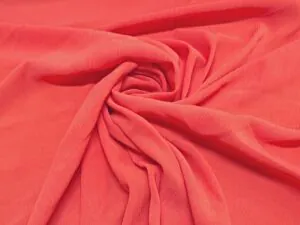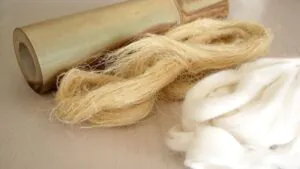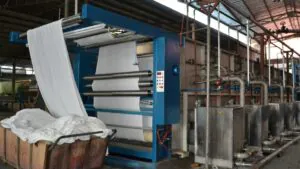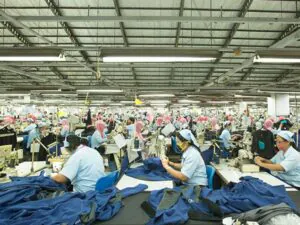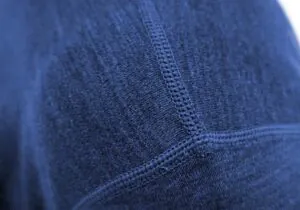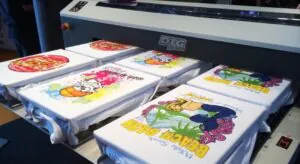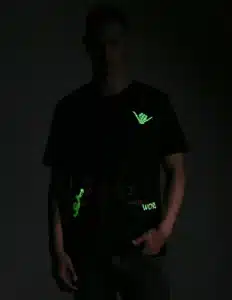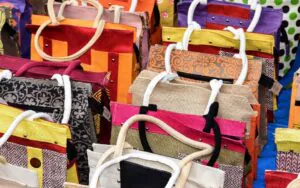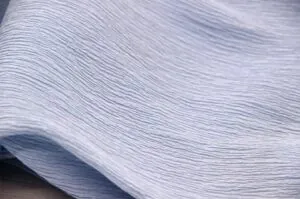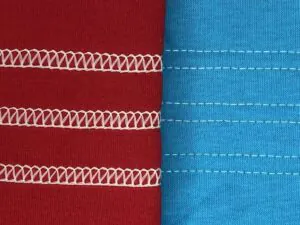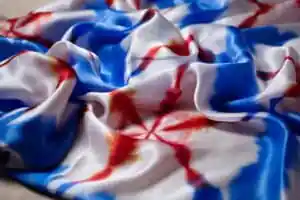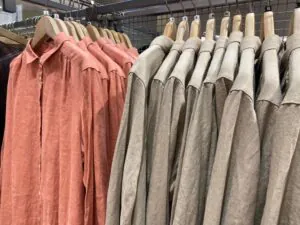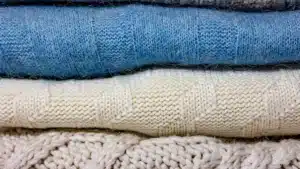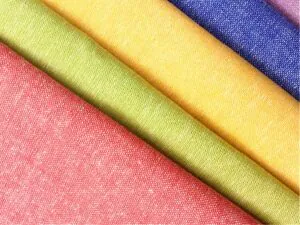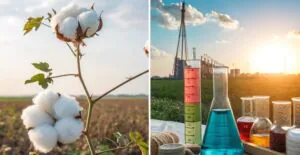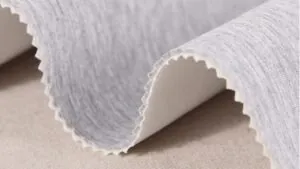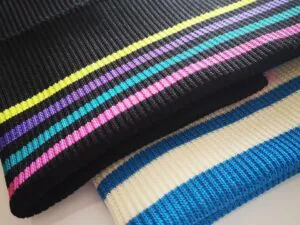
Polytetrafluoroethylene (PTFE) fabric is a man-made material known for its slippery surface, ability to handle high heat, and stability in tough conditions. These features make Polytetrafluoroethylene (PTFE) fabric ideal for demanding industrial tasks. For instance, PTFE fabric performs exceptionally well in extreme environments, demonstrating remarkable durability without breaking down. It is resistant to chemical damage and can withstand heat without deteriorating.
Industries such as automotive manufacturing, communication systems, and military defense heavily utilize Polytetrafluoroethylene (PTFE) fabric. The demand for PTFE products, including Glass Fiber Fabric PTFE, is rapidly increasing. This versatile material plays a crucial role in advancing technology and supporting modern innovations.
Key Takeaways
PTFE fabric is strong and can handle heat and chemicals well.
Its smooth surface stops things from sticking, helping machines work better and last longer.
PTFE fabric is useful in many fields like space, healthcare, and cars because of its special features.
But PTFE fabric has problems, like being costly to make and hard to recycle.
New ideas, like eco-friendly PTFE and better recycling, try to lower its harm to the environment.
Key Properties of Polytetrafluoroethylene (PTFE) Fabric

Chemical Resistance and Inertness
PTFE fabric is great at resisting chemicals. It stays strong even when exposed to harsh substances. It can handle acids like sulfuric and hydrochloric without damage. It also works well with acetic and phosphoric acids. Strong bases, such as sodium and potassium hydroxide, do not harm it. This makes it useful for cleaning and waste treatment in industries. PTFE also resists solvents like acetone and methanol. This helps it last in systems for medicine and oil industries. Its ability to stop corrosion in tough environments is very valuable.
Thermal Stability and Heat Resistance
PTFE fabric is one of the best heat-resistant materials. It can handle very high temperatures without breaking down. Studies show PTFE fibers start to decompose at 508.6°C. Tests like TGA and DSC prove its heat stability. For example, TGA heated PTFE from 30°C to 600°C. DSC measured its melting and crystallization points. These tests show PTFE works well in hot conditions. It is used in machines and aerospace parts because of this. Its heat resistance ensures it performs well in tough jobs.
Physical Characteristics and Low Friction
PTFE fabric has special physical features. It has a low friction level, between 0.04 and 0.10. This reduces wear and tear on surfaces. The low friction stops sticking and allows smooth movement. PTFE keeps this property in temperatures from -45°C to 100°C. Its strong carbon-fluorine bonds create a protective layer. This layer reduces sticking and increases durability. PTFE is perfect for conveyor belts and seals. Expanded PTFE (ePTFE) improves these features, making it even more useful.
Advantages of Polytetrafluoroethylene (PTFE) Fabric
Durability and Longevity
PTFE fabric is very strong and lasts a long time. It doesn’t wear out easily, even in tough places. This makes it great for industries needing durable materials. For example, PTFE belts in food factories stay strong for years. They don’t need to be replaced often. ePTFE is even better because it’s more flexible and stronger. It works well in medical tools and outdoor equipment. PTFE fabric stays reliable, even with heavy use.
Non-Stick and Low-Friction Surface
PTFE fabric has a surface that doesn’t let things stick. This is why it’s used in baking pans and cookware. In factories, PTFE belts move items smoothly without sticking. Its slippery surface also protects moving parts from wearing out. This helps them last longer. Studies show how speed, weight, and time affect PTFE’s friction:
Factor | How It Affects PTFE |
|---|---|
Sliding Speed (V) | Changes friction and wear levels |
Load Applied (P) | Alters wear and weight loss |
Sliding Time (t) | Impacts overall wear and friction |
These nonstick and low-friction features make PTFE useful at home and in factories.
Resistance to Extreme Conditions
PTFE fabric works well in very tough conditions. It can handle high heat, strong chemicals, and outdoor weather. Tests like salt spray and hot-cold cycles prove its strength. For example:
In hot, wet places, strength drops by only 8%, but stretch increases by 15%.
In heat and humidity, it absorbs 20% more water but stays strong.
These tests show PTFE fabric stays tough and reliable. It resists rust, temperature changes, and chemical damage. This makes it perfect for waterproof and strong materials in cars, planes, and outdoor gear.
Versatility in Different Uses
PTFE fabric is one of the most useful materials today. Its special traits, like heat resistance and low friction, make it important. Many industries, like aerospace and construction, depend on PTFE. It helps improve how things work and makes them last longer.

Uses in Various Industries
PTFE fabric is used in many areas. It stays strong in tough conditions, making it great for both factories and homes. Here’s how it’s used:
Industry/Field | Uses |
|---|---|
Electrical and Electronics | Covers wires, makes electronic parts, and provides safe insulation. |
Automotive | Makes seals, gaskets, and parts that need to work well. |
Aerospace | Used in fuel systems, hydraulic parts, and protective coatings. |
Consumer Goods | Found in non-stick pans, sports gear, and personal care items. |
Construction | Used in roof covers, wall coatings, and strong sealants. |
Medical | Makes catheters, surgical tools, and body implants. |
Textiles | Creates strong fabrics and protective clothing. |
Why PTFE Fabric is Special
PTFE fabric is amazing because of its unique features. It can handle high heat (up to 600 degrees Kelvin) and reduces friction. It doesn’t get damaged by chemicals, so it lasts a long time. Its strength makes it perfect for heavy-duty jobs. These qualities make it useful for waterproof clothes and non-stick pans.
A History of Great Ideas
PTFE has been part of many big inventions. It was first used to cover wires and later helped in computers in the 1950s. It was even used in the Apollo 11 spacecraft for important cables. This shows how PTFE keeps helping new technology grow.
From planes to clothes, PTFE fabric proves its value. It works well in many places and stays useful for industries everywhere.
Disadvantages of Polytetrafluoroethylene (PTFE) Fabric
Even though PTFE fabric has many advantages, it also has some downsides. These issues might make it less suitable for certain uses.
1. High Cost
PTFE fabric costs more than other man-made materials. Making it requires advanced tools and methods, which raises the price. If you have a tight budget, this material may not work for you.
Note: Its high price means PTFE fabric is mostly used in industries like aerospace or medicine, where its special features are necessary.
2. Environmental Concerns
PTFE fabric is not eco-friendly and causes environmental problems. It doesn’t break down naturally, so it stays in landfills for a long time. Recycling it is hard because of its chemical makeup, which adds to waste issues.
Environmental Issue | Impact |
|---|---|
Non-Biodegradability | Builds up in landfills |
Recycling Challenges | Few ways to reuse it |
3. Limited Mechanical Strength
While PTFE fabric resists damage, it isn’t very strong mechanically. It can bend or change shape under heavy weight or pressure. If you need a strong material for support, PTFE fabric might not be the best option.
4. Susceptibility to Creep
PTFE fabric can slowly change shape when under constant stress. This makes it less reliable for jobs needing long-term stability.
Knowing these drawbacks helps you decide if PTFE fabric is right for your needs. It works well in many areas, but you should think about these limits before choosing it.
Applications of PTFE Fabric
PTFE fabric is strong and useful in many industries. Its special features help it work well in tough conditions. This makes it great for many different jobs.
Industrial Uses (like seals, gaskets, conveyor belts)

PTFE fabric is very important in factories. It resists chemicals and heat, making it perfect for seals and gaskets. These parts stop leaks and keep machines running safely. Conveyor belts made of PTFE fabric are also very helpful. Their smooth surface stops sticking and keeps materials moving easily.
Industries like food, oil, and medicine use PTFE for filters. It works well in hard conditions and stays reliable. The table below shows some main industrial uses:
Application Area | Description |
|---|---|
Industrial Filtration | Works well in food, oil, and medicine filtering systems. |
Water & Wastewater Treatment | Helps clean water and remove harmful stuff. |
Architecture | Sometimes used for roofing in buildings. |
Clothing and Outdoor Jacket (like Gore-Tex)
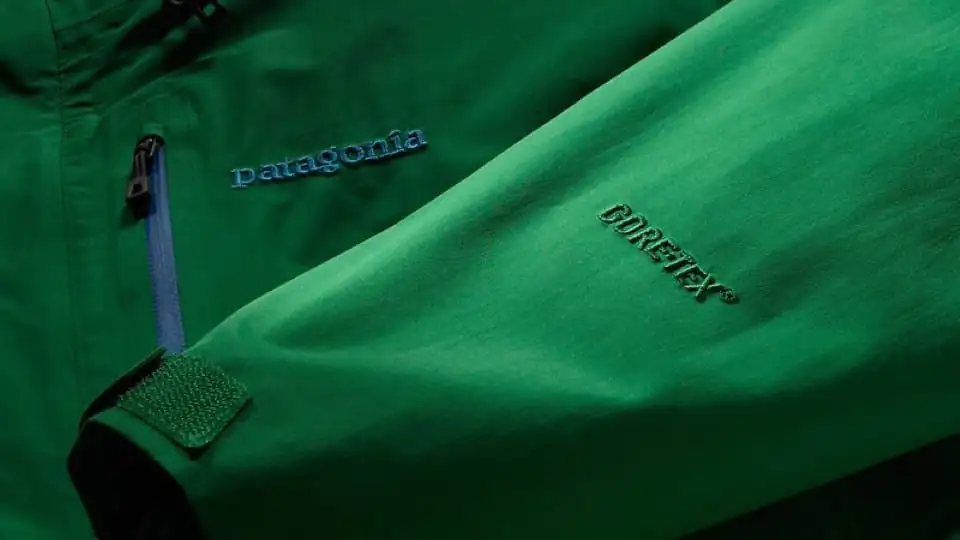
PTFE fabric changed outdoor jackets with Gore-Tex products. It keeps water out but lets air in, making it great for jackets and gloves. Whether it’s raining or snowing, PTFE fabric keeps you dry and comfy.
It lasts a long time, so outdoor gear doesn’t need replacing often. This also helps the environment. ePTFE (Expanded Polytetrafluoroethylene)improves airflow, stopping overheating during activities. PTFE fabric also handles heat and chemicals, making it even better for outdoor use.
Gore-Tex protects you from bad weather.
PTFE fabric lets air through, keeping you cool and dry.
It lasts long, even in rough conditions.
Electronics and Electrical Insulation
PTFE fabric is great for electronics because it insulates well. It stops energy loss and keeps signals strong over long distances. This makes it good for high-tech uses like RF and microwave boards.
It also protects wires from heat, water, and chemicals. In buildings, PTFE-coated fabrics give safe insulation for parts. The table below shows its electrical uses:
Application Area | Description |
|---|---|
Dielectric Insulation | Keeps signals strong by stopping energy loss. |
Electrical Wire Encapsulation | Shields wires from heat, water, and chemicals. |
RF and Microwave PCBs | Provides great insulation for high-tech uses. |
PTFE fabric’s role in electronics shows how it helps modern technology. Its special traits make it reliable and efficient for important tasks.
Medical and Healthcare Uses
PTFE is very important in medicine because of its special traits. It doesn’t react with other materials, so it’s safe to use. PTFE is found in tools like catheters, implants, and surgical instruments. Its smooth surface lowers friction and stops tissue damage during surgeries. PTFE’s resistance to chemicals keeps medical tools clean and long-lasting.
PTFE fabric also helps with wound care. Expanded PTFE (ePTFE) is used in bandages and grafts. It lets air in but blocks harmful germs. This helps wounds heal faster and lowers infection risks. PTFE is also safe for long-term implants like heart valves and artificial joints.
PTFE improves diagnostic tools too. It insulates wires and parts, giving accurate results. Its heat resistance protects devices during cleaning. These features make PTFE a key material in modern healthcare.
Aerospace and Automotive Applications
PTFE is very useful in planes and cars. It handles high heat and tough conditions, making it great for important parts. In planes, PTFE is used in fuel systems, hydraulic tubes, and coatings. These parts face high pressure and temperature changes, and PTFE keeps them working well.
In cars, PTFE improves safety and performance. It’s used in seals, gaskets, and hoses. Its slippery surface reduces wear, helping parts last longer. PTFE-coated fabrics are also in airbags, helping them open smoothly in emergencies.
PTFE is also used to protect wires in vehicles. It shields them from heat and chemicals, keeping them safe and working properly. Whether in planes or cars, PTFE’s special features make it a trusted choice for tough jobs.
How PTFE Fabric Compares to Other Materials
PTFE vs. Nylon
PTFE and nylon have different features and uses. PTFE creates more surface charge during repeated contact, especially with more force. Nylon makes less charge overall. PTFE changes more with temperature and humidity, while nylon stays steady.
Metric | PTFE | Nylon |
|---|---|---|
High at first, slows later | Lower charge overall | |
Surface charge density (after 5, 50, 150 contacts) | Higher with more contact force | Lower than PTFE |
Influence of temperature and relative humidity | Changes a lot | Stays steady |
PTFE resists chemicals and heat, making it great for tough jobs. Nylon costs less and works better for everyday uses.
PTFE vs. Polyester
PTFE and polyester fabrics are different in flexibility, cost, and heat resistance. PTFE bends easily, so it’s good for moving parts like roofs. Polyester is strong but less flexible. PTFE handles extreme heat and UV rays, while polyester melts in high heat and uses more energy.
Feature | PTFE Fabric | Polyester Fabric |
|---|---|---|
Flexibility | Very flexible, good for moving parts | Less flexible, not for moving parts |
Cost | Expensive | Cheaper |
Strength | Not as strong as polyester | Very strong |
Temperature Resistance | Handles -100°F to 450°F, resists UV rays | Melts in high heat |
Maintenance | Easy to clean with water | Needs special cleaning |
Energy Efficiency | Reflects heat, saves energy | Uses more energy |
PTFE is best for hot or outdoor uses. Polyester is better for cheaper, strong needs.
PTFE vs. Silicone-Coated Fabrics
PTFE and silicone-coated fabrics are both useful in industries but perform differently. PTFE stays stable and loses less material over time. Silicone-coated fabrics lose more material and are less stable under stress.
PTFE lasts longer and resists wear, making it good for long-term use. Silicone-coated fabrics cost less and work for short-term needs.
Environmental Impact of Polytetrafluoroethylene Fabric
Sustainability and Recycling Challenges
PTFE fabric creates big environmental problems. Making it needs high heat, which uses a lot of energy. This adds to pollution and harms the planet. PTFE doesn’t break down naturally, so it piles up in landfills. Getting rid of it becomes a long-term problem because it resists decay.
Recycling PTFE is hard because of its chemical makeup. Handling its fluorinated parts is risky and needs strict rules. Many companies don’t know recycled PTFE can save money and help the environment. Studies show 60% of industries don’t think about using recycled materials. Also, some industries are slow to accept recycled PTFE due to mixed opinions on sustainability.
Collecting and sorting used PTFE items is another challenge. This is especially true in industries where PTFE is used in many ways. These problems show the need for better ways to manage PTFE waste and reduce its harm to the environment.
Innovations in Eco-Friendly Alternatives
Scientists are finding ways to make PTFE fabric greener. New methods aim to lower its environmental damage. For example, water-based processes are replacing harmful solvent-based ones. This change reduces bad gas emissions and makes production cleaner.
Using recycled materials is another good idea. Adding plastics from old products into PTFE can cut carbon pollution by 30%. Biobased PTFE, made from renewable resources, works just as well and is better for the planet. These options give industries greener choices for PTFE use.
Better recycling technology also helps manage old PTFE products. These advancements allow safe disposal and turn recycled PTFE into new items. The table below explains these eco-friendly ideas:
Innovation Type | Description |
|---|---|
Sustainable Manufacturing Processes | Using water-based methods instead of solvents to cut harmful gas emissions. |
Incorporation of Recycled Materials | Adding old plastics to PTFE production, reducing carbon pollution by up to 30%. |
Biobased PTFE Alternatives | Made from renewable resources, offering eco-friendly performance. |
End-of-Life Management | New recycling methods for safe disposal and creating new products from old PTFE. |
These ideas show how industries can make PTFE less harmful to the environment. By using these solutions, we can help create a greener future.
Polytetrafluoroethylene (PTFE) fabric is special because of its features. It resists heat, doesn’t react with chemicals, and has a slippery surface. These traits make it useful in many industries. PTFE is used in aerospace, medical tools, and factories. It helps machines work better and last longer. For example, PTFE coatings improve solar panels and wind turbines in renewable energy.
But PTFE has environmental problems. Making and throwing it away can harm nature. Recycling PTFE is also hard to do. Still, new ideas like biobased PTFE and cleaner production methods are helping. These changes aim to make PTFE safer for the planet.
Application Area | Key Benefits | Environmental Concerns |
|---|---|---|
Aerospace | Protects and insulates parts | Making it can harm the environment |
Medical | Safe for the body and doesn’t react | Needs a lot of energy to produce |
Industrial | Strong, resists damage from chemicals | Costs more than other materials |
Renewable Energy | Helps solar panels and wind turbines work better | Making it affects the environment |
PTFE fabric is very useful and helps improve technology. By using greener methods, industries can keep using PTFE while protecting the environment.
FAQ
1. What makes PTFE fabric special compared to other materials?
PTFE fabric is unique because it resists heat, chemicals, and sticking. These features make it great for machines, medical tools, and airplanes. It lasts longer and works better than many other synthetic fabrics.
2. Can PTFE fabric be reused or recycled?
Recycling PTFE fabric is hard due to its chemical makeup. But new ideas like biobased materials and better recycling methods are helping. These options can lower its impact on the environment.
3. Is PTFE fabric safe for food-related uses?
Yes, PTFE fabric is safe for food use. Its smooth surface and chemical resistance make it perfect for pans, belts, and food machines. It keeps things clean and works well in these areas.
4. How does PTFE fabric handle very hot or cold temperatures?
PTFE fabric works well in extreme heat or cold, from -100°F to 450°F. It doesn’t melt, crack, or break in these conditions. It’s trusted for use in planes, cars, and factories.
5. Are there eco-friendly options instead of PTFE fabric?
Yes, eco-friendly choices like biobased PTFE or silicone-coated fabrics exist. These materials work similarly but are better for the planet. They are good for strong and sustainable uses.


